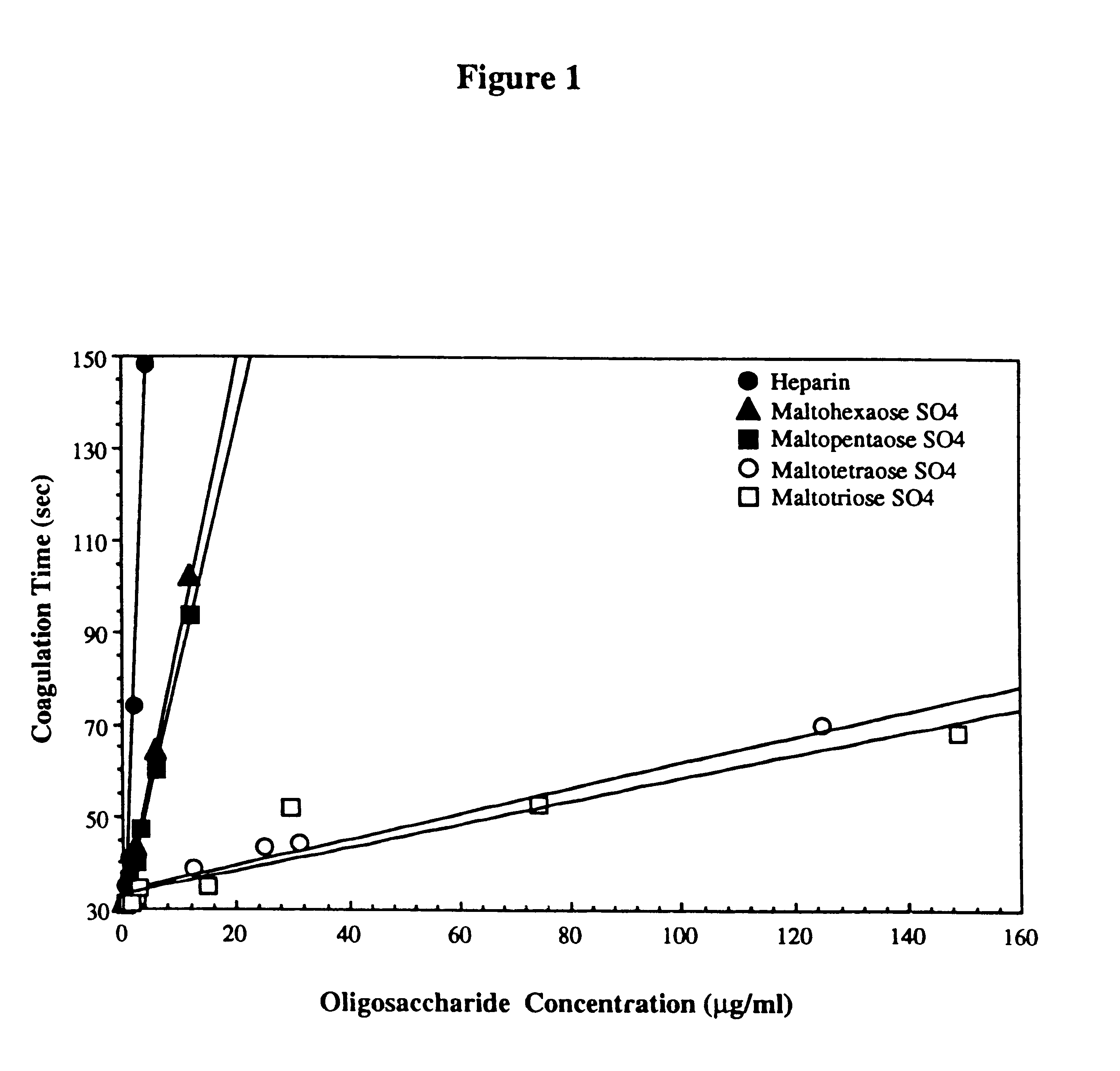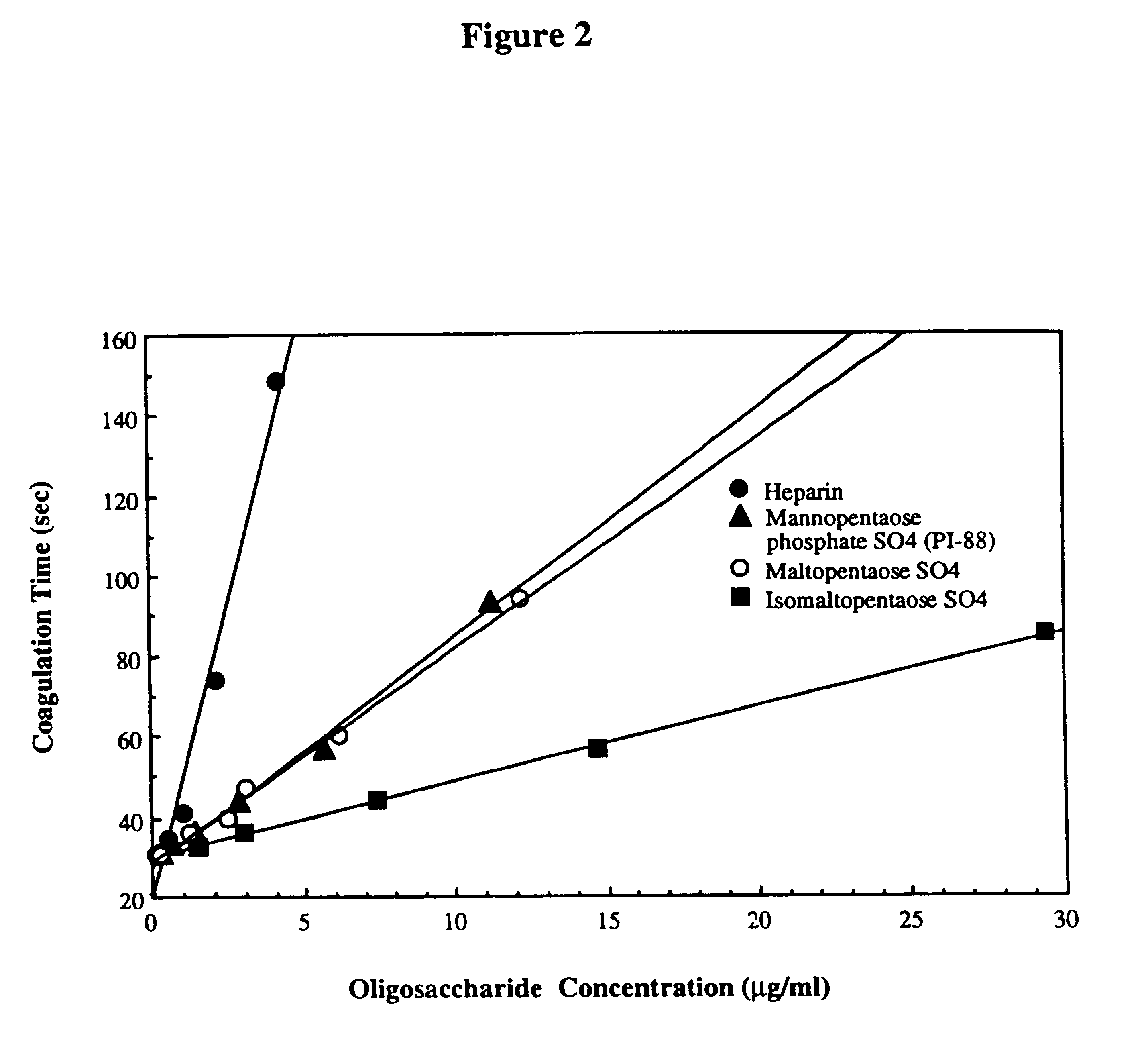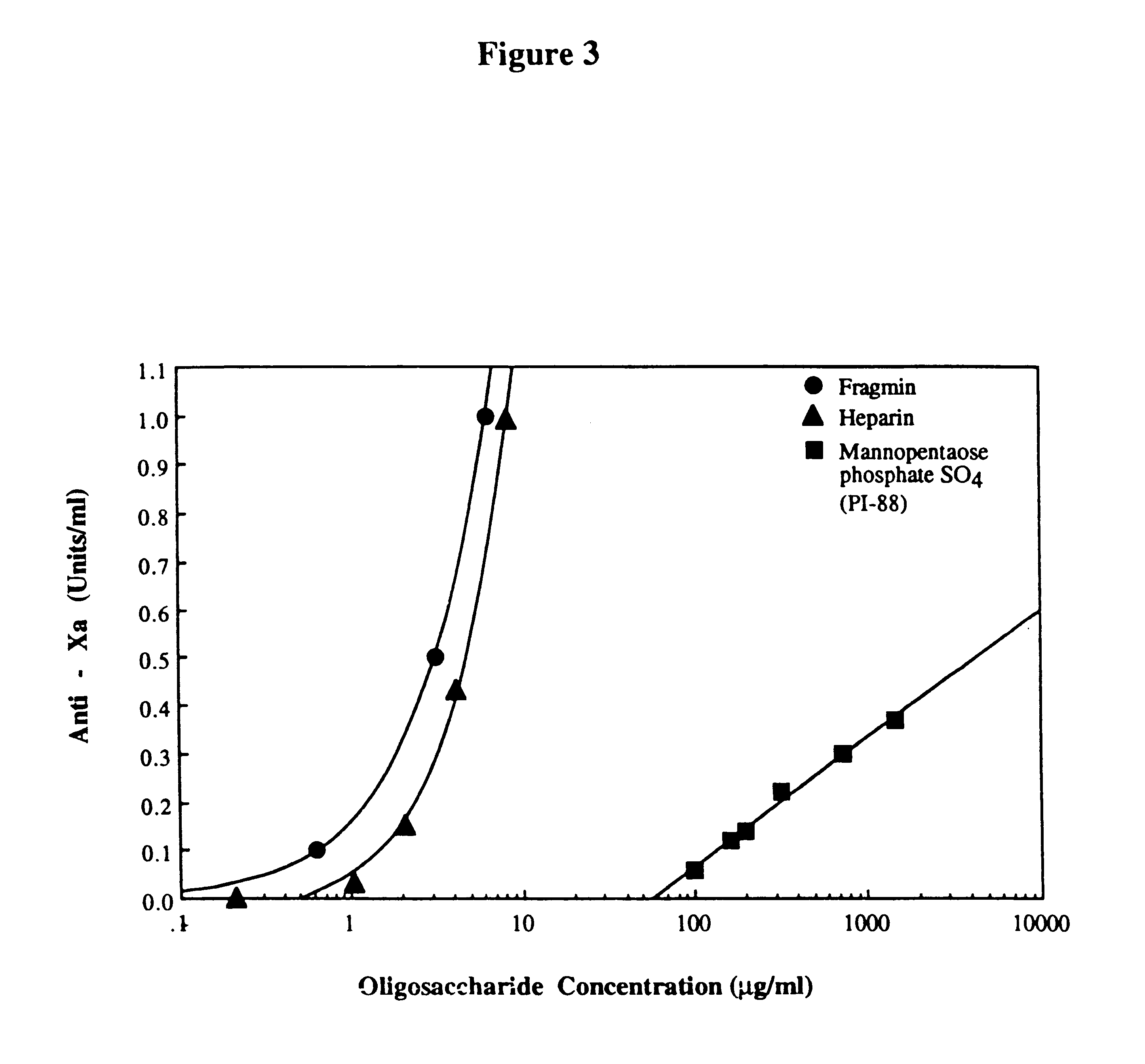Sulfated oligosaccharides having anticoagulant/antithrombotic activity
a technology of oligosaccharides and anticoagulants, which is applied in the direction of biocide, drug compositions, extracellular fluid disorders, etc., can solve the problems of difficulty in quality control of different heparin batches, the risk of contamination with animal pathogens, and the inability to administer heparin intravenously
- Summary
- Abstract
- Description
- Claims
- Application Information
AI Technical Summary
Problems solved by technology
Method used
Image
Examples
example 2
Anticoagulant Activity of the Sulfated Oligosaccharides
Table 1 summarises the anticoagulant activity of 19 sulfated oligosaccharides, as measured by the activated partial thromboplastin time (APTT) test. Similar results were obtained with the thrombin time test. At the outset it is clear that 11 of the sulfated oligosaccharides tested exhibit considerable anticoagulant activity when compared with heparin and Fragmin (LMW heparin). Chain length, monosaccharide makeup and linkage, all appear to be critical factors. The influence of chain length is particularly evident with the maltose series where the di-, tri- and tetrasaccharides exhibit low activity whereas the maltopentaose, maltohexaose and maltoheptaose sulfates are quite effective anticoagulants (Table 1, FIG. 1). Furthermore, a striking feature of the maltose series is that chain elongation y a single residue from the maltotetraose to maltopentaose results in a 19-fold increase in anticoagulant activity. The importance of mono...
PUM
| Property | Measurement | Unit |
|---|---|---|
| molecular weight | aaaaa | aaaaa |
| coagulation time | aaaaa | aaaaa |
| affinity | aaaaa | aaaaa |
Abstract
Description
Claims
Application Information
 Login to View More
Login to View More - R&D
- Intellectual Property
- Life Sciences
- Materials
- Tech Scout
- Unparalleled Data Quality
- Higher Quality Content
- 60% Fewer Hallucinations
Browse by: Latest US Patents, China's latest patents, Technical Efficacy Thesaurus, Application Domain, Technology Topic, Popular Technical Reports.
© 2025 PatSnap. All rights reserved.Legal|Privacy policy|Modern Slavery Act Transparency Statement|Sitemap|About US| Contact US: help@patsnap.com



